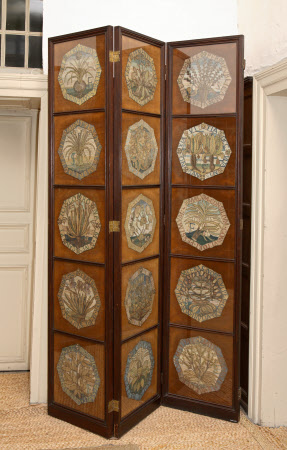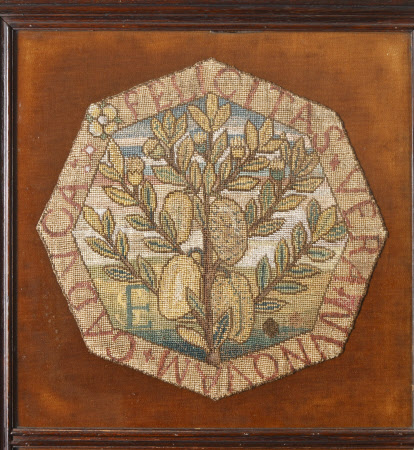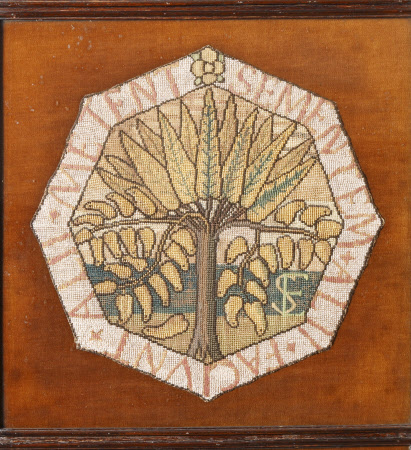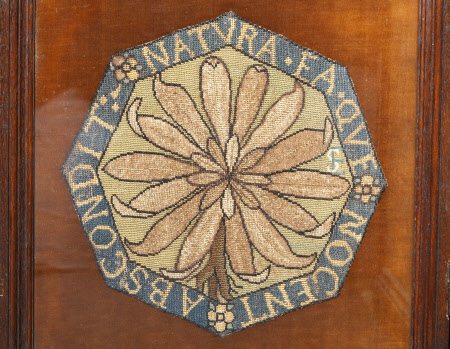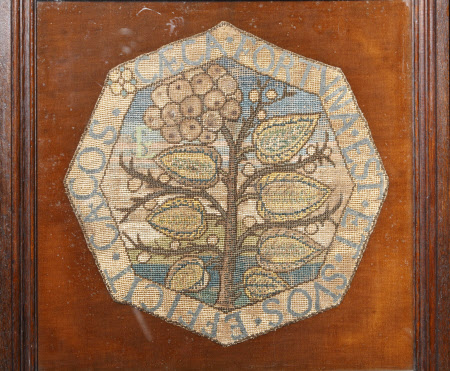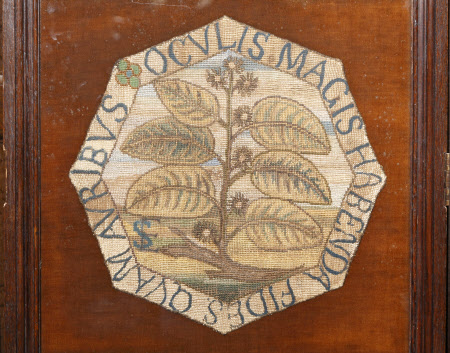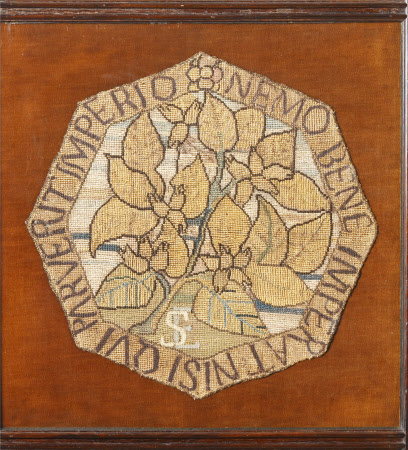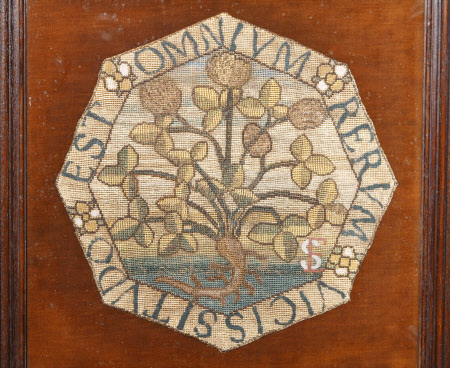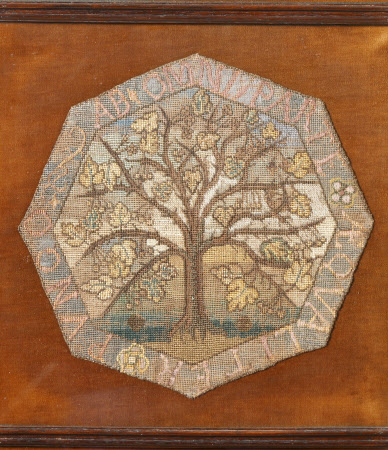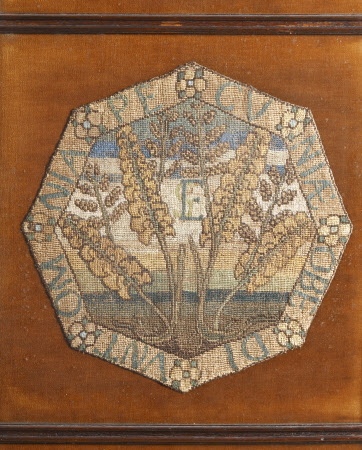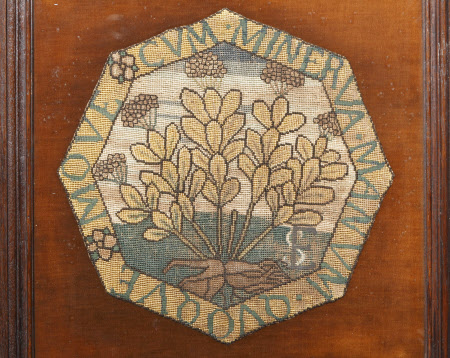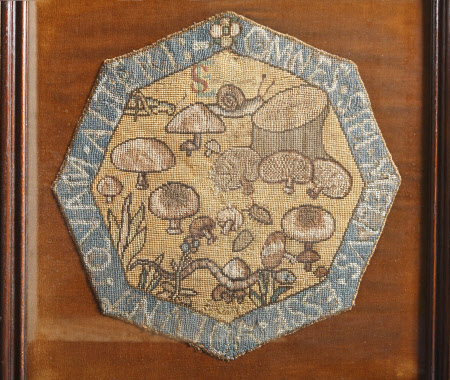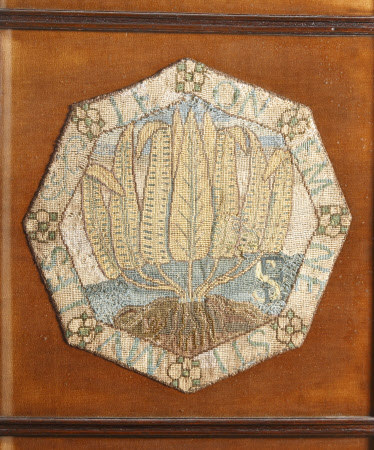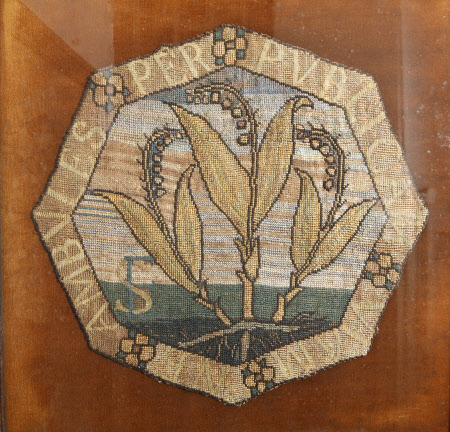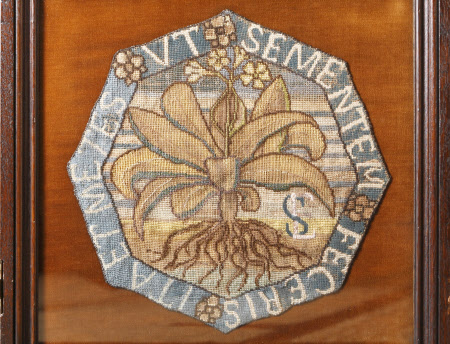Folding screen
Category
Furniture
Date
circa 1900 (the screen; the needlework circa 1575)
Materials
Oak, Glass, Brass, Canvas, Silk, Wool
Measurements
246 x 160.5 cm
Place of origin
England
Order this imageCollection
Hardwick Hall, Derbyshire
NT 1130604
Caption
The interiors and collections at Hardwick include examples of some of the most fascinating and rare textiles to survive from the late 16th century. Elizabeth (Bess) Talbot, Countess of Shrewsbury, gave over entire rooms at Hardwick to create space for her professional embroiderers, but she was also a skilled maker herself and some of the most characterful pieces are the product of her own needle. Textiles held a particular place in elite households during this period. The extraordinary cost of the materials – silks, gold threads, continental velvets – and the skilled labour needed to produce them meant they were the epitome of luxury. They were also a source of warmth, a marker of taste, a prompt for conversation and an outlet for creativity. Bess took an active interest in the design, development and production of the tapestries and embroidered textiles that adorned the beds, walls and furniture in her homes at Hardwick and elsewhere. Embroidery featuring flower or plant stems (called ‘plant slips’, as ‘slipping’ was the practice of pulling up single stems with roots to propagate new plants) became increasingly fashionable at this time. The collections at Hardwick include a group of octagonal plant-slip panels (pages 28–9), most bearing the prominent initials of their maker – ES for Elizabeth Shrewsbury. It is possible that they were originally incorporated into five wall hangings of green velvet embellished with cloth of gold and silver described in a 1601 inventory of the property. The embroideries show stylised trees, flowers and plants, from leaf to root, accompanied by an occasional hen, snail or butterfly. Most are copied from illustrations in botanist Pietro Andrea Mattioli’s 1558 Commentary on Dioscorides. Around the edge of each octagon is a Latin motto, taken from sources including Erasmus’s Adages (1500). Bess worked on the embroideries with Mary, Queen of Scots (1542–87) while the latter was incarcerated and in the custody of the Earl of Shrewsbury. A recent interpretation of these works argues that they are a form of information management – a means by which Bess could engage in intellectual experiments in a language that, as a woman, society more readily permitted her to use. They form a virtual collection of plant specimens and mottoes published in wool and silk, but also acted as an educational tool for Bess when learning the Latin phrases. A panel with a leek, for example, is circled with the text Minutula plvia imbrem parit (little drops make up the shower), using a visual memory prompt as well as a mnemonic pun based on the homophone leek/leak.
Summary
A three-fold screen, one of a pair of oak-framed and glazed three-fold screens, English, circa 1900, once a single six-fold screen, now separated into two. Each fold framing five needlework octagons, circa 1575, or fifteen in total. The octagons matching panels mounted on a set of hangings, now at Oxburgh Hall, Norfolk, which were worked by Bess of Hardwick, Mary, Queen of Scots and their gentlewomen in the 1570s. All but two of the thirty-one octagons remaining at Hardwick Hall bear Bess of Hardwick's initials, and show naturalistic flowers sourced from the 1568 and 1572 editions of a book by the Botanist Pietro Andrea Mattioli. Each flower surrounded by a Latin tag of the sort learnt by schoolboys, not the names of the plants. These inscriptions, many of which must have been worn, were over-painted by the 6th Duke of Devonshire. The octagons of linen canvas worked with silk and wool in cross and tent stitch. The screen with moulded frame and brass hinges.
Provenance
Transferred to the National Trust from the Treasury in 1984.
References
Bath 2008: Michael Bath, Emblems for a Queen: The Needlework of Mary Queen of Scots, London 2008 Levey, 1998: Santina M. Levey, An Elizabethan inheritance: the Hardwick Hall textiles. London: National Trust, 1998., pp. 58 - 60 Conroy, Rachel, Women Artists and Designers at the National Trust, 2025, pp. 28-9
